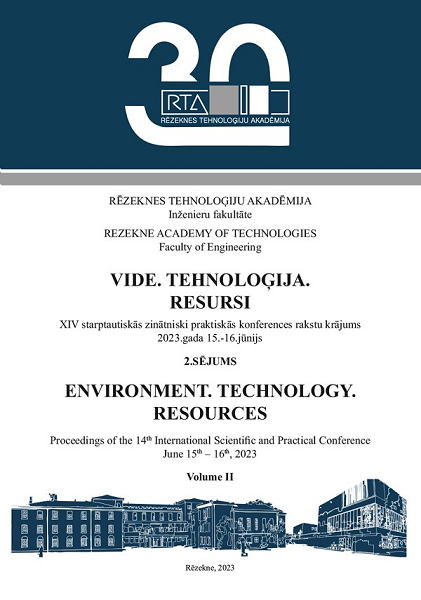THE USE OF VIRTUAL REALITY SOLUTIONS TO IMPROVE EDUCATIONAL EXPERIENCE FOR IT STUDENTS
DOI:
https://doi.org/10.17770/etr2023vol2.7219Keywords:
augmented reality, education, learning management system, virtual realityAbstract
The paper is focused on the research on virtual reality solutions which could be used to improve educational experience focusing on IT students. Current state of the art in the field of VR use for educational purposes was analysed. Pros and cons for VR implementation in education were considered. As the solution to enhance educational experience was proposed to integrate VR environment with learning management system in order to automate assessment for mass-learning courses. An example of such integration, a system based on Unity engine for VR laboratory environment development, and Moodle for learning management system, was presented. Experimental results obtained during testing of developed system proved possibility of proposed integration approach and possible benefits from its practical implementation for mass learning courses.
Downloads
References
J. N. Bailenson, J. Blascovich, A. C. Beall, J. Loomis and M. Turk, Transformed social interaction: Decoupling representation from behavior and form in collaborative virtual environments. Presence: Teleoperators and Virtual Environments 13(4), 2004, pp. 428-441.
U. Uruthiralingam, P.M. Rea. Augmented and Virtual Reality in Anatomical Education – A Systematic Review. Adv Exp Med. Biol. 2020;1235:89-101. doi: 10.1007/978-3-030-37639-0_5. PMID: 32488637.
C. Dede, Immersive Interfaces for Engagement and Learning. Science 323, 2009, pp: 66-69. DOI: 10.1126/science.116731
M. A. Rojas-Sánchez, P. R. Palos-Sánchez and J. A. Folgado-Fernández, Systematic literature review and bibliometric analysis on virtual reality and education. Educ Inf Technol 28, 2023, pp: 155–192. https://doi.org/10.1007/s10639-022-11167-5
N. Glaser and M. Schmidt, Systematic Literature Review of Virtual Reality Intervention Design Patterns for Individuals with Autism Spectrum Disorders, International Journal of Human–Computer Interaction 38(8), 2022, pp: 753-788, DOI: 10.1080/10447318.2021.1970433
P. Diegmann, M. Schmidt-Kraepelin, S. Eynden and D. Basten Benefits of Augmented Reality in Educational Environments – A Systematic Literature Review, Wirtschaftsinformatik Proceedings 103, 2015.
Z. Merchant, E. T. Goetz, L. Cifuentes, W. Keeney-Kennicutt and T. J. Davis, Effectiveness of virtual reality-based instruction on students' learning outcomes in K-12 and higher education: A meta-analysis, Computers & Education, Vol. 70, 2014, pp. 29-40, https://doi.org/10.1016/j.compedu.2013.07.033.
K.S. Tang, D.L. Cheng, E. Mi and P.B. Greenberg, Augmented reality in medical education: a systematic review. Canadian Medical Educcation Journal 11(1), Mar. 16, 2020, doi: 10.36834/cmej.61705.
P. Wang, P. Wu, J. Wang, H.-L. Chi and X. Wang, A Critical Review of the Use of Virtual Reality in Construction Engineering Education and Training, Int. J. Environ. Res. Public Health 15, 1204, 2018, https://doi.org/10.3390/ijerph15061204


